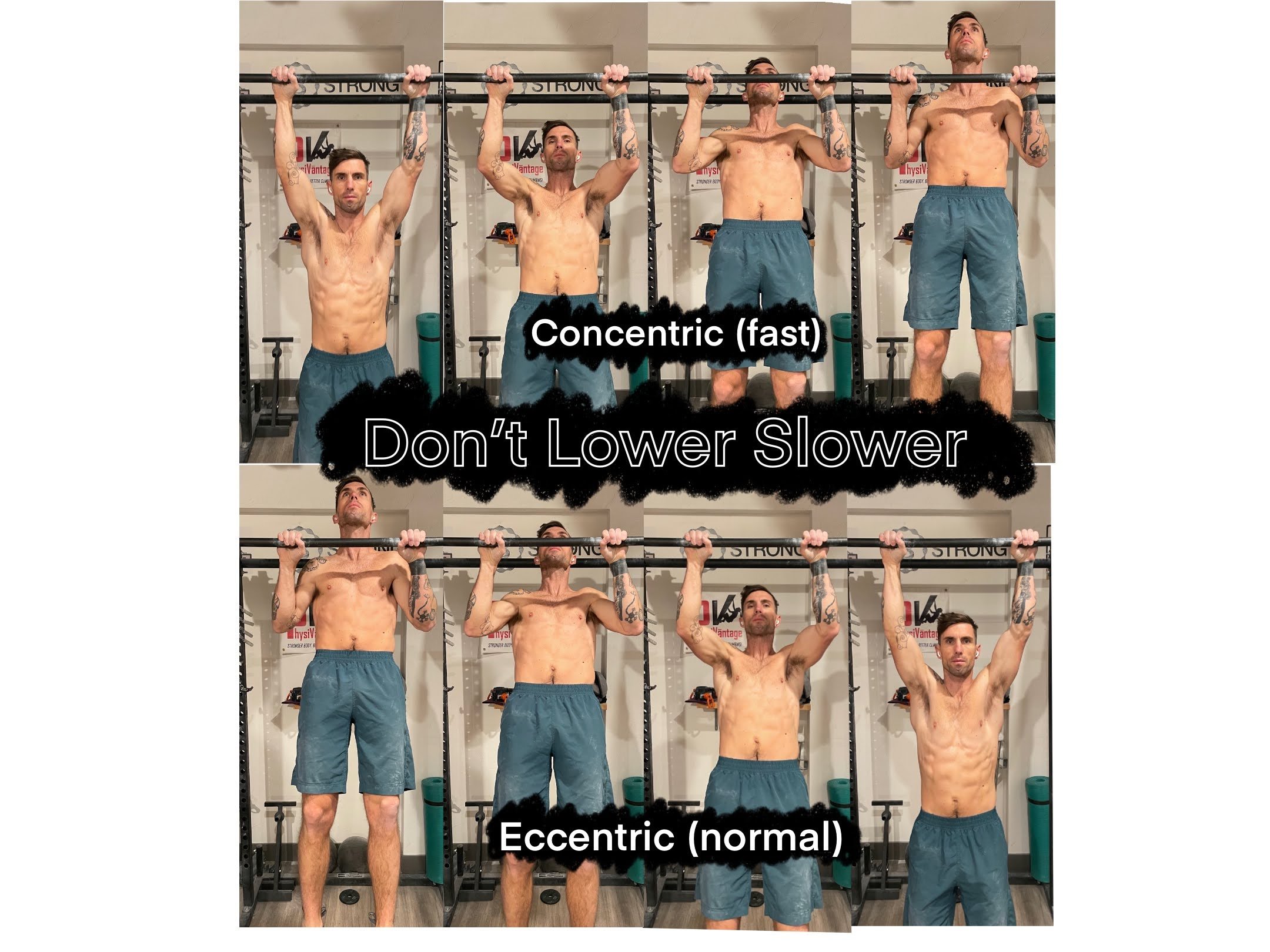Slow Eccentrics: Should You Lower Slower?
Has someone recommended slow eccentrics in your training?
It's a common misconception that doing a slow negative will increase muscular recruitment and strength.
On the contrary, we can do more load with an eccentric because of passive tension. That is, the connective tissues themselves make up the difference in force production.
This doesn't mean that doing heavy eccentrics isn't helpful. It simply means that once an athlete already has high levels of recruitment (advanced training age), they aren't getting any additional benefits by using them in isolation, and certainly if they are performed at a lower intensity (bodyweight example for the pull-up).
Regarding the lowering phase of a strength training movement (see below pull-up example), doing a slow eccentric is counterproductive for athletes.
The load is too low (because we lifted it upwards). Because of this, we only use the low-threshold motor units when lowering back down. In this context, we aren't increasing recruitment. We are potentially getting hypertrophy and fatigue in the smaller motor units. This is not a practical application for athletes looking to develop power.
see the difference:
Key takeaways:
Don't lower slower with your training. You're likely wasting time and energy. Long-term, this will reduce power.
Perform each movement with maximum concentric velocity, even if the load is heavy (it will be slower). Then lower at an average speed, not rush there.
The lowering portion of a strength training movement (an eccentric contraction) is not the same as eccentric training (requires and overload).
Doing less is more. Cutting out the slow negatives will allow you to perform more specific repetitions (concentric).

